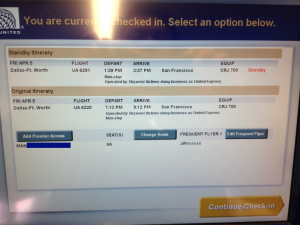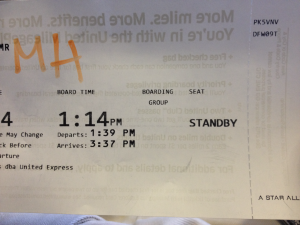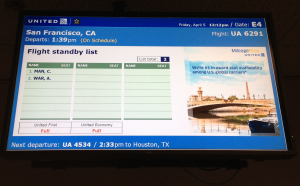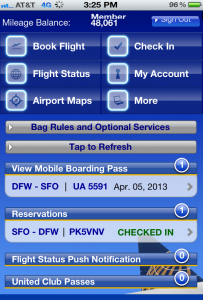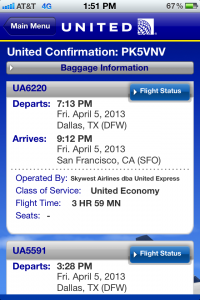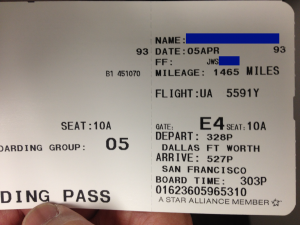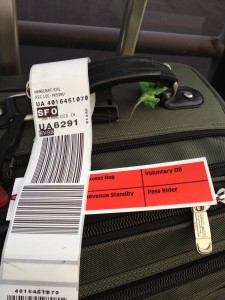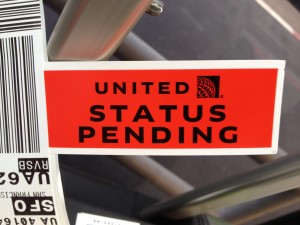A relative is going on a two-stage trip to the US sometime between October and December and sought advice about how to prepare for it. It was going to be her first trip outside the Philippines, and at 25 hours would be the longest she’s ever been on an airplane . She was understandably apprehensive.
Her itinerary was going to to take her to New Jersey, where she was going to stay with my brother for a few weeks. Then it was off to San Francisco to visit my family for the rest of her vacation. Therefore she didn’t only need to prepare for the flight, but also for two different climates both of which were very different from the typical Filipino experience.
Here is what my wife and I put together her. We’re sharing the list here for the benefit of other first-time travelers who may be looking for similar information. Male travelers should adjust clothing recommendations accordingly.
=========
Before the flight
There are a number of things that you need to take care of before starting the trip.
| Accounts, credit cards, and cash | If you plan to use your Philippine debit account or credit card, notify your bank prior to your trip so that they grant you international access. This is not enabled for all accounts by default. Verify how much that international access will cost you. They typically charge per transaction. Note that credit cards offer fraud protection that debit cards don’t. So consider using your credit card for most transactions.Credit cards will work for pretty much everything on your trip. Keeping $40 dollars handy will be more than enough for the duration of the trip. Besides . . . the hospitality of your hosts should cover most things. |
| Prepare your phone | If are thinking of using your smart phone periodically during the trip, remember to turn “data roaming” off. Otherwise you will receive a pretty nasty — expensive — surprise on your phone bill when you get back. Some applications connect to the Internet automatically, and unless you reconfigure each individually to turn this off, the easiest solution is to simply deny these applications access to the network. |
| Travel insurance | Travel insurance covers all manner of unforeseen events from unexpected travel cancellations to medical emergencies. Insurance minimizes the budgetary impact of such situations, and I would seriously consider getting it.If you buy your ticket with a credit card, travel insurance my already be included. Best to verify with your credit card provider. If your card doesn’t have it, or you didn’t use a credit card for the ticket, then consider buying insurance directly from a provider. Make inquiries with your travel agent, or your preferred insurance provider. |
For the flight (Estimated time: 22 to 25 hours)
What to bring
The following are items that you keep on your person when you board the aircraft. Put these in a small tote bag, hand bag, or very small knapsack that you can either insert into the pocket of the seat in front of you, or beneath it. Note that you will not be allowed to keep anything on your lap.
| Passport | You will be asked to identify yourself at different points in the boarding process and to fill out various immigration and customs forms before the plane lands. So you will always need to have your passport handy. |
| Ballpoint pen (preferably blue or black) | Since you need to fill out forms . . . you’ll need something to fill it out with. I’ve seen the mad scramble for pens often enough to know that you don’t want that hassle. Not after countless hours sitting in one place |
| Headphones | Airlines will issue you headphones to access the inflight entertainment system (e.g., movies, TV shows, music, even games on some flights). The vast majority provide this for free. Some domestic US carriers, however, will actually charge you. The quality of these headphones is understandably mediocre. If you want to block out noises, bring your own that fit your ears best. |
| Underwear | As a first time traveller . . . it can’t hurt to be safe |
| Toiletries | Some airlines will give you a toothbrush and toothpaste. Others won’t. So if you need to have that minty-fresh feeling when you wake up after extended sleep, keep these in a small ziplock bag. Other items to keep in that bag: lip balm, and facial moisturizers. Cabin air is very dry so you need to moisturize face and lips.Bring the travel-sized versions (1-2oz), which are the only ones allowed in by airport security. Here is a useful site for additional details about this restriction: http://www.tsa.gov/traveler-information/3-1-1-carry-ons |
| Entertainment options | On the off-chance that the movie and music offerings in the in-flight entertainment system aren’t to your liking, bring a book or music on your smart phone or MP3 player. US domestic flights don’t always provide too many options. |
| Credit card | This may be useful for the US-leg of your travel if you aren’t able to buy food at your lay-over airports. Unlike international flights, domestic travel in the US doesn’t offer substantial meals. |
What to wear
| Shoes | Wear flat and relatively loose shoes that can be easily slipped on and off — preferably without having to tie shoelaces, eg., Crocs. This will make clearing security lines, where you will be asked to take your shoes off, much easier. Not too crazy about being barefoot on an airport floor where who-knows-what has gone over? Wear socks.Loose footwear will also help if you are one of those people whose feet swell when in the air (this is completely normal by-the-way).Note, however, when making your selection don’t choose footwear so loose that they’ll fall off if you ever need to go to a place in a hurry. Slippers or flip-flops . . . not advisable |
| Clothing | Avoid clothes that are tight fitting. You’ll be sitting down for most of that 22 to 25-hour flight. We’re all getting older and we need to do all that we can to avoid impairing blood circulation anymore than our seats (and dietary choices) already do. Leggings, for example, are a popular choice for female travelers. Jogging pants work well for all genders. Airconditioning on the flight can get cold, but most airlines do provide blankets for these long haul flights. |
| Belts | Avoid wearing them if you can. These have to be removed during pre-boarding inspection anyway and may be constricting on the flight. If you do need to use one, don’t wear it before clearing the security line. Put it on once in the pre-departure area. |
For the rest of the trip
The coldest part of this vacation will be the New Jersey leg. Accuweather predicts October temperatures there this year to range from 17 to 22 Celsius. Pretty cold by Philippine standards, and things will only get colder from there. Gloves shouldn’t be necessary initially, but a scarf will keep you nice and toasty whenever the wind picks up. Northern California can still go down to 0 Celsuis in December, but hasn’t snowed at ground-level in decades.
| Tops | “Layering” is the key to staying warm. So while it’s a good idea to bring sweaters and the like, you have to bear in mind that most places you will go to will be heated. So you have to be able to take your warm clothing off while your in there. Otherwise you will sweat, and then when you go back outside, you will be both cold and wet. Bring a combination of sweaters and your normal tropical clothing. This will allow you to add layers as it gets cold, and remove them as your surroundings heat up. |
| Pants | Most of your regular tropical jeans, slacks, etc. will be fine. However, bring ones that are loose enough to accommodate thermal underwear. We don’t really notice it much back home, but wind can permeate jeans. |
| Shoes | Bring comfortable walking shoes that are closed, don’t let the wind in (e.g., rubber shoes with fabric covers that actually let you see your socks), are preferably water-resistant, and are loose enough to accommodate thermal socks. Favor shoes that cover your ankles (e.g. high-cut boots) because they will keep your toes nice and toasty. Otherwise, you will need those thermal socks sooner than later. |
